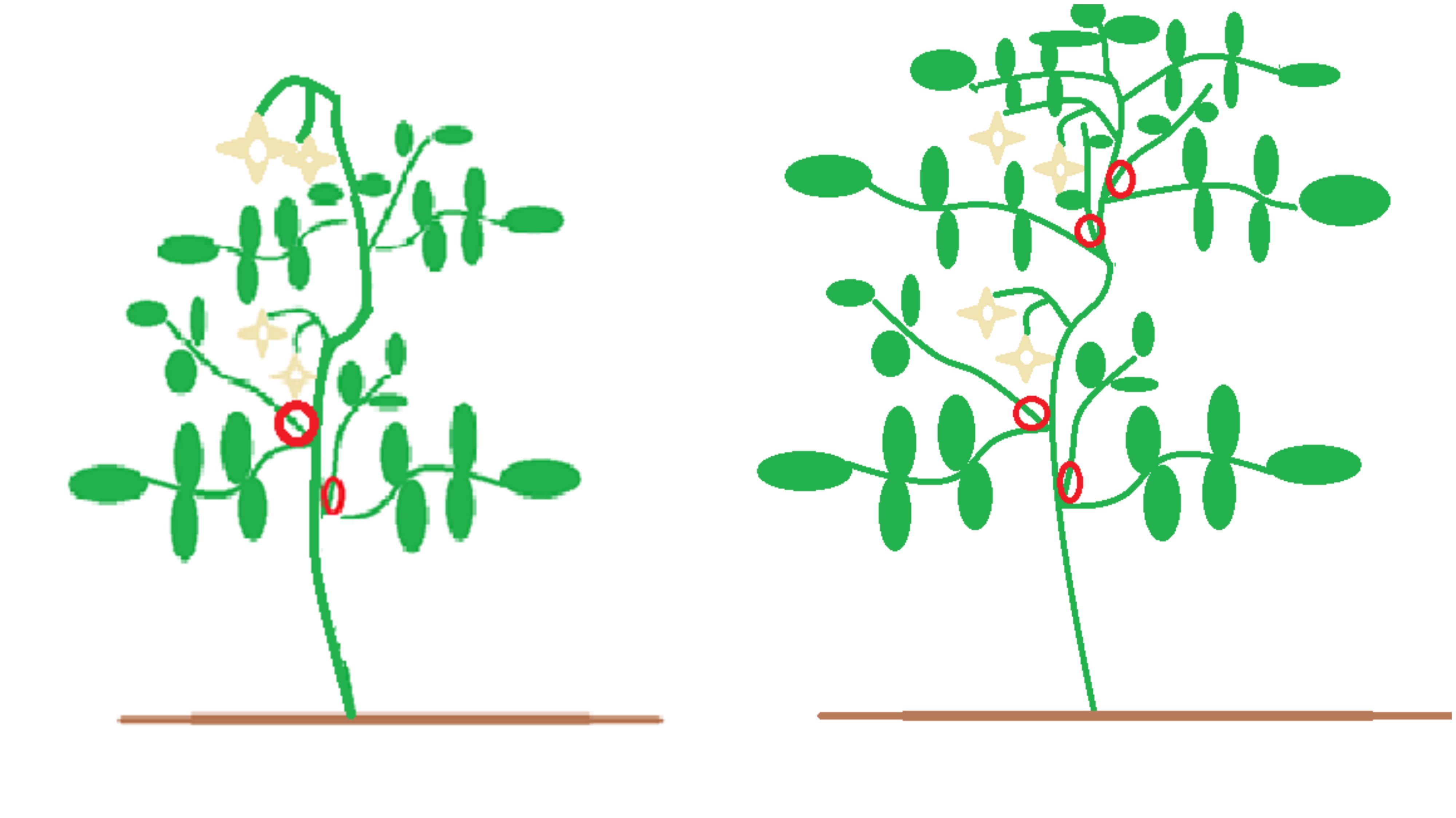How To Properly Prune Tomatoes

One of the most often overlooked growing practices is pruning tomatoes. Before you start clipping, you’ll need to know what type of tomato you are growing. There are two types, indeterminate and determinate.
Indeterminate tomatoes are those that have a leaf bud as the apical meristem. This means the plant will continue to grow taller as you water and fertilize it. You may have seen these plants grow to heights of 10-12 feet. Determinate tomatoes are shorter than indeterminate because their apical meristem is a flowering bud. Determinate tomatoes generally remain 5 feet tall and under. Both types – indeterminate and determinate – have positive attributes. Indeterminate tomatoes trellis well, and some people claim they produce tomatoes longer.
Determinate tomatoes stay shorter and are well suited for the field but also do excellent in containers. You can identify the type of tomato by reading the label. The word determinate or indeterminate should be clearly labeled on the seed pack or small label in the tomato transplant container. A few of the more common determinate tomatoes are Celebrity, Bella Rosa and Mountain Spring. A few of the common indeterminate tomatoes are Early Girl, Better Boy and Fantastic. However, there are thousands of tomato varieties to choose from!
Pruning determinate tomato varieties
To properly prune a determinate tomato, pinch all suckers from the ground level to the first flower cluster (see diagram 1). A sucker is a small stem that is growing between the main trunk and stem of a tomato. It is usually growing at a 45 degree angle. Pinch the areas shown with red circles around them.
You will want to pinch the sucker at the base. Remove the sucker while it is small. If you wait until the suckers are the diameter of a pencil or larger, you run the risk of stripping the outer layer of tissue (the cambium layer) from the main stem. Leaving a large open wound may enable fungus and other unwanted pests to attack your tomato shrub.

Pruning indeterminate tomato varieties
To properly prune an indeterminate tomato, prune all suckers from the ground level up to the second flower cluster. See diagram 2. Follow the same instructions as for determinate tomatoes.

Pruning tomatoes encourages larger fruit production at the top of the plant. It also opens up heavy, dense foliage at the bottom of the plant, allowing for better air flow between plants. The open canopy discourages insect and disease populations. Many people are under the impression that suckers do not produce fruit. This isn’t so. But by removing the bottom suckers, you remove the fruit that would weigh down lower branches and rot on the ground.



1 Comment
Tamara Tomaschow · June 27, 2017 at 9:40 am
What is your plant related background Maggie?
Comments are closed.